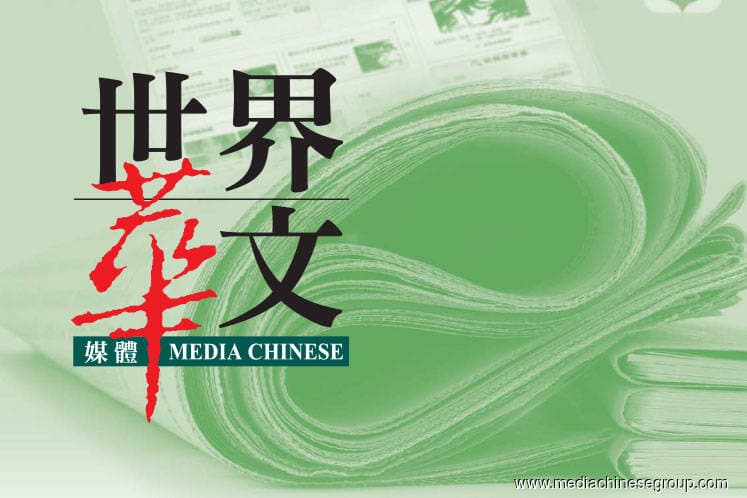
This article first appeared in The Edge Financial Daily on December 10, 2019
Media Chinese International Ltd
(Dec 9, 18 sen)
Maintain hold with an unchanged fair value (FV) of 18 sen: We maintain our “hold” recommendation on Media Chinese International Ltd (MCIL) with an unchanged FV of 18 sen per share, pegged at a price per book value of 0.45 times. We cut our financial year 2021 to 2022 forecasts (FY21F–FY22F) by 13% after readjusting our tax assumptions to normalise beyond FY20F.
We met up with MCIL’s management recently and came away with the following key highlights: MCIL’s first half of financial year 2020 (1HFY20) net profit of RM23 million beat expectations due to a lower-than-expected taxation incurred in the second quarter (2QFY20) after its North American operations received a tax refund upon the successful application of a tax incentive scheme amounting to C$1 million (RM3.14 million). We note that otherwise, 1HFY20 earnings before interest, taxes, depreciation and amortisation were in line with expectations at 52% of our forecasts.
MCIL shared that a lower effective tax rate would be enjoyed in FY20F due to the tax incentive received, but the tax credit is an accumulated one-off amount. The group said tax rates would normalise in the years ahead. The group historically pays a blended tax rate above the 24% statutory rate (around 30%–37% effective tax rate in 2015–2017) mainly due to higher tax rates incurred for its travel operations in North America, offset by lower taxes paid in Hong Kong, Taiwan and China, and a 24% tax rate paid in Malaysia.
The group confirmed that printing operations for its Nanyang Siang Pau publications have already shifted and consolidated with Sin Chew Daily’s printing operations in Jalan Semangat, Petaling Jaya.
According to EdgeProp.my, Nanyang’s office building site located in SS7, Petaling Jaya, has been put up for rent at an asking monthly rental of RM2.50 per square foot. Based on the advertisement by Knight Frank Malaysia, the site spans 5.86 acres (2.37ha) in the Sungai Way Free Trade Industrial Zone and comprises a 137,000-sq ft 4½-storey office and a 100,000-sq ft 2½-storey warehouse.
Nanyang plans to relocate the remaining non-print operations in future. The group also shared that it does not have enough capacity in its Sin Chew plant to consolidate its China Press printing on-site.
We are positive on the group’s move to consolidate its Nanyang and Sin Chew printing operations as it will lead to future cost savings and potentially generate rental income from its Nanyang site. On the plus side, newsprint prices have been averaging down to around US$600 (RM2,496) a tonne and are expected to be lower ahead, offsetting declines in print revenues.
MCIL has been focusing on its localised digital-first approach to provide advertising solutions in Malaysia, where a mixture of digital, print, video and event solutions are tailor-made for advertisers. The group reported that it has also been targeting solutions for small and medium enterprises. In Hong Kong, Ming Pao’s creative arm WAW Creation (which works on “a one-stop agency” concept providing integrated solutions to advertisers through omnichannel delivery ie digital, social media, print and events) is reportedly doing very well and the group plans to extend this offering to China’s Greater Bay Area in Guangdong province.
The group’s travel segment contributes around 40% of group revenue, with offerings focused on the middle to premium marketS.
The publishing and printing segment is expected to be impacted by a lack of advertising expenditure (adex) catalysts and muted consumer sentiment for the rest of 2HFY20, coupled with the unresolved US-China trade tensions and Hong Kong protests impacting its travel segment as around 55% of its market is from Hong Kong.
We keep our “hold” recommendation on MCIL amid its lacklustre outlook, arising from: i) the declining newspaper circulation due to the structural shift towards digital content; ii) the subdued adex outlook in its market segment amid weaker consumer sentiments; and iii) the contributions of its digital and travel revenues remain insufficient to offset the decline in traditional media. — AmInvestment Bank, Dec 9